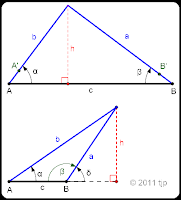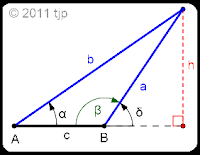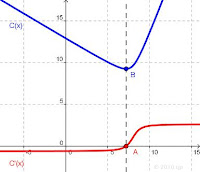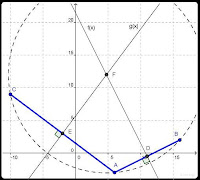
Nomenclature:
• log_b(x) → "log, base b, of x"
log[b](x) is also recognizable when "b" is complicated
• ln(x) → natural log: "log, base e, of x"
• ld(x) or lb(x) → binary logarithm: "log, base 2, of x"
• Log(x) → "log, base 10, of x"
• log(x) → common log: may be base e, base 10, or base 2
depending on location, application, context, etc.
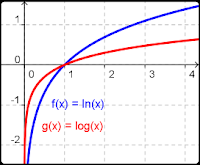 Definitions:
Definitions:• logb(x) = y ⇔ x = by
• ƒ(x) = logb(x)
for {b∈ℝ | b > 0, b ≠ 1} and {x∈ℝ | x > 0}
Trivial identities:
• logb(b) = 1
• logb(1) = 0
Logarithm property of equality:
Ok, there really isn't such a property. Logs are exponents, so it's just the multiplication property of equality at work. None the less:
• a = b ⇔ log(a) = log(b)
Product Rule:
• logb(xy) = logb(x) + logb(y)
Quotient Rule:
• logb(x/y) = logb(x) - logb(y)
Power Rule:
• logb(xy) = y logb(x)
• logb(x1/y) = logb(x) / y
Change of Base Rule:
• logb(x) = loga(x) / loga(b)
Derivatives:
• D{ln(x)} = 1 / x
• D{lg(x)} = 1 / (x ln(10))
• D{logb(x)} = 1 / (x ln(b))
Complex:
• ln(-1) = πi
• lg(-1) = πi / ln(10)
• logb(-1) = πi / ln(b)
A few handy corollaries:
• logb(x) = 1 / logx(b)
• logb(x) / n = logbⁿ(x)
• logb(1/x) = log1/b(x) = -logb(x)
• bloga(x) = xloga(b)
• blogb(x) = x
• 10lg(x) = x
• eln(x) = x
• log(a) × log(b) = log(blog(a))
• logb(a) × logc(d) = logc(a) × logc(d) / logc(b)
• logbp(x) = (1/p)logb(x)
for {b∈ℝ | b > 0, b ≠ 1} and {p∈ℝ | p ≠ 0}
Calculating the antilog:
Some calculators have an inverse– or anti–log key, many do not. After all, how far over back should calculator manufacturers bend for users who don't really understand logs?
• antilogb(x) = bx
